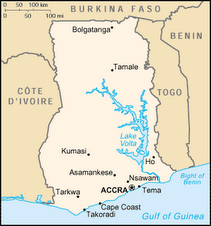The Ebola epidemic was the topic of this week’s clinical
conference. This virus is named after the Ebola river in what is now the
Democratic Republic of Congo where the disease was first identified in 1976. It
is transmitted by close contact with an infected person’s skin or body secretions.
The Public Health Authorities here advise against bringing a suspected patient
directly to the hospital where he could contaminate others, but prefer instead
that a trained team go out to the suspected patient’s house to properly isolate
and transport him to a unit which has the proper equipment and trained health
care providers. There have been no proven cases in Ghana.
There are many cases of aspiration and ingestion of foreign
bodies in northern Ghana. With modern telescopic equipment and magnified images,
the foreign bodies can be successfully removed. However, the local hospitals
and clinics lack both x-ray equipment and doctors and the patients present a
year later with abscesses, perforations and bleeding. Two cases are typical. A
nine year-old boy with a nail in his bronchus presented eighteen months after
aspirating it. We were unable to get it out with our first try and while
waiting a necessary interim before making another attempt, the patient’s family
took him from the hospital and did not return. We will now try to locate him in order to
remove the object and hopefully prevent
his death or having some of his lung removed. In another case, a sixteen year-old girl presented a week after a fish
bone was caught in her throat; there was
400 ml of exudate in her neck and her
larynx and esopha gus were edematous.
The bone could not be located with all the edema. In two days, after a ten-day course of antibiotics
to reduce her infection and edema, a second attempt at removal will be made.


1 comment:
Thank you for the update. In regards to the current Ebola concern in the greater west africa region, please take extra precautions for your safety and health.
Post a Comment